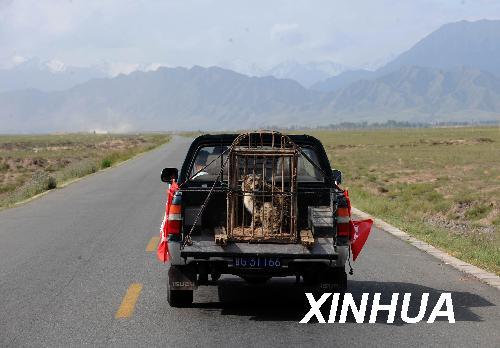A female snow leopard was released back into the wild in northwest China Wednesday after receiving care for a respiratory tract infection.
 |
|
A female snow leopard in the cage was driven to the suburbs of Zhangye City, Gansu Province June 10, 2009. It was released back into the wild after receiving care for a respiratory tract infection.
|
The big cat, which weighed 40 kg and was between 70-80 cm long, hesitated a few seconds after the cage was opened, then rushed to the woods in the suburbs of Zhangye City, Gansu Province, without looking back at the people who had taken care of her since she was found on April 29.
"She was exhausted and panting when she was found. We believed she was too sick to hunt from an infection and so she came into the village to look for food," said Zhao Chongxue, a researcher with the Gansu Endangered Animal Research Center.
Staff added medicine to food and water for the snow leopard for 10 days essentially curing her, Zhao added.
The snow leopard wandered into a village at the foot of Qilian Mountain in Zhangye City, on April 29, prompting fearful villagers to seek help from police. The animal was then shot with a tranquilizer gun and put in an iron cage for transfer to the research center.
Xie Jianrong, chief wildlife official of Zhangye City, said the area where the snow leopard was released is sparsely populated and rich in prey. He believed she would live a good life there in the wild.
Hundreds of local residents came to see the rare animal Wednesday.
Snow leopards are usually nocturnal and live in mountains more than 3,000 meters above sea level.
The animal is listed as endangered in China, the same classification given to the giant panda. An estimated 3,500 to 7,000 wild snow leopards roam the mountains of central Asia, in addition to 600 to 700 more in zoos around the world.